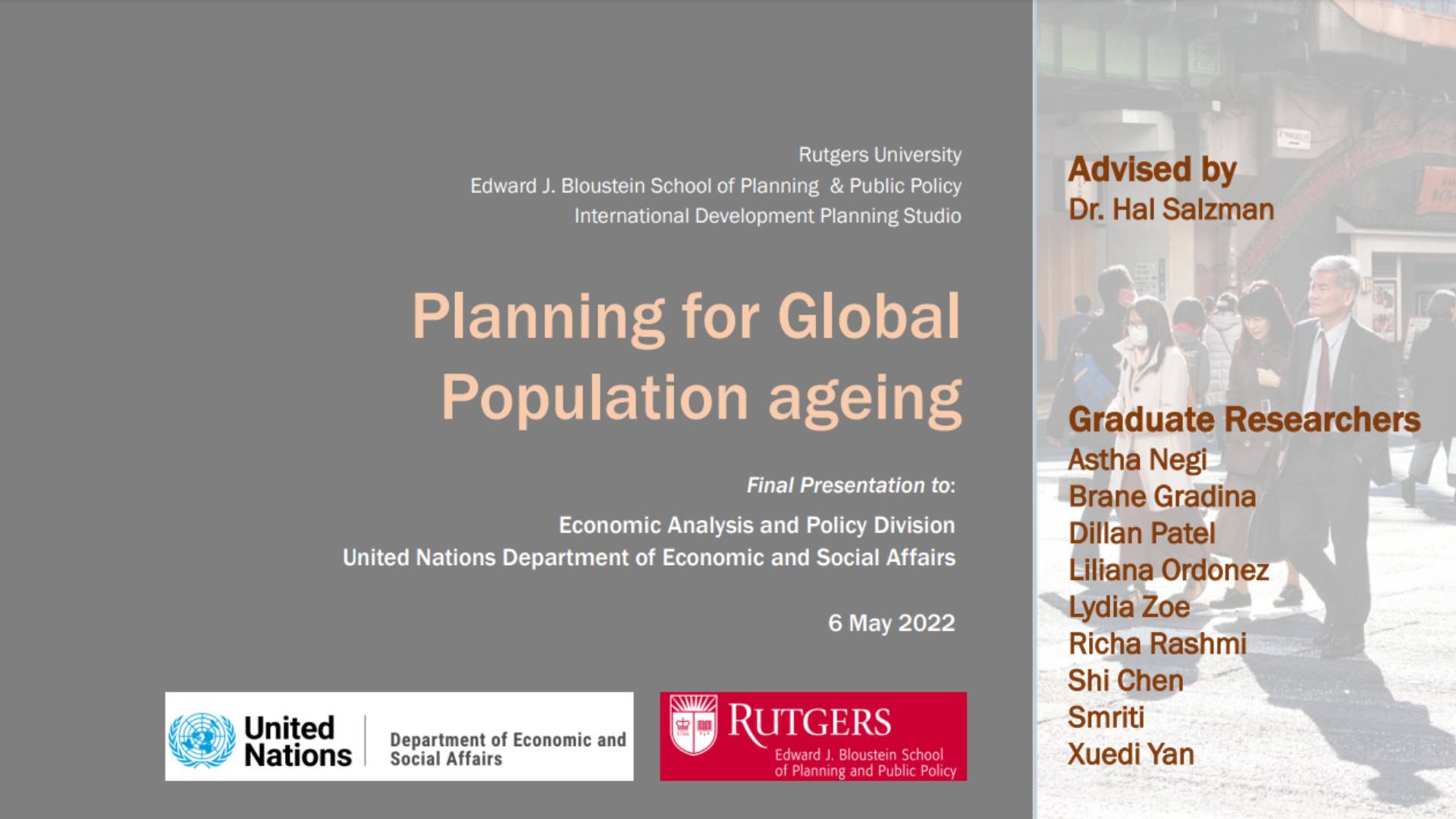Report for Economic Analysis and Policy Division, United Nations Department of Economics and Social Affairs
Instructor: Hal Salzman
The world is greying. There are more older adults aged 65 and above today than children under the age of five. One in five adults will be a senior citizen in another three decades. This ‘inverted age pyramid’ poses significant challenges to economic growth and social cohesion. As the working-age population shrinks and dependency rises, gross domestic product and employment rates may experience a severe decline. Underneath this umbrella effect is a range of factors contributing to an aging economy’s detrimental effects – a fall in production and consumption levels, increased health and pension expenditures, and an overburdened yet shrinking revenue base. On the social side, changes in the societal composition of young and old will affect behavioral dynamics at all stages of life and cultural adaptation. Climate change and a warming world will further exacerbate the woes of a greying world. How can nations prepare for a demographic shift to an aging economy and society in this context?
As the quest for sustainable development pushes nations to reinvent their economic, social, and environmental goals, it is also an opportunity to rewire the potential of the emerging demography. Declining fertility and mortality rates cause aging. There is also a global increase in life expectancy, or longevity, as a direct outcome of advances in medical knowledge and care and improvements in the living environment. While aging focuses on changes in population structure, longevity has significant implications on how individuals age and capitalize on life expectancy gains. Examining the longevity patterns in an economy can offset the effects of aging. It may also reduce non-linearities that can narrow the impact of aging to a confined threshold. Yet, if the increased lifespan isn’t healthy and productive, longevity gains will not be beneficial. Without focusing on healthy living, aging will lead to an increase in ailments and disabilities in the older population. To this effect, the report identifies crucial links to planning for longevity and healthy aging.

